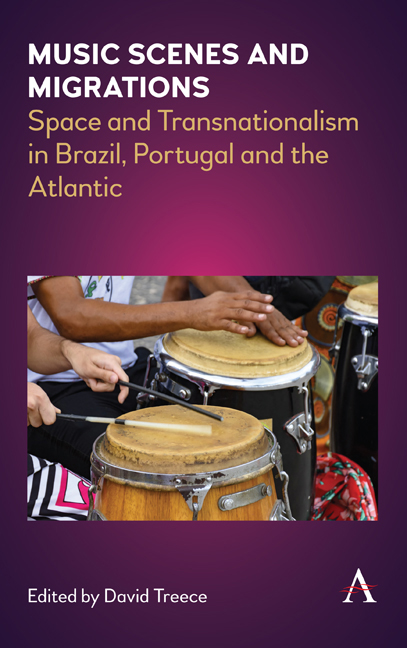Book contents
- Frontmatter
- Contents
- List of Illustrations
- Acknowledgements
- Introduction
- Part 1 Colonial and Postcolonial Transnationalisms, Migrations and Diasporas
- Part 2 Relocating Rio de Janeiro
- Part 3 Demetropolitanizing the Musical City: Other Scenes, Industries, Technologies
- Notes on Contributors
- Notes
- References
- Index
Chapter 12 - Samba, Pagode and Mediation: From Backyard toDisc
Published online by Cambridge University Press: 20 January 2022
- Frontmatter
- Contents
- List of Illustrations
- Acknowledgements
- Introduction
- Part 1 Colonial and Postcolonial Transnationalisms, Migrations and Diasporas
- Part 2 Relocating Rio de Janeiro
- Part 3 Demetropolitanizing the Musical City: Other Scenes, Industries, Technologies
- Notes on Contributors
- Notes
- References
- Index
Summary
At different moments in the musical history of Rio deJaneiro, samba and pagode (a subgenre or style of samba)emerged from the communities of the city's socialand/or geographical peripheries. From the 1910s,what we recognize as modern urban samba began todevelop in the Cidade Nova (New Town), a centraldistrict of the city adjacent to the Praça Onze,largely inhabited in the late nineteenth and earlytwentieth centuries by a black community thatmigrated there from the north-eastern state of Bahiaand from the interior of Rio de Janeiro state,during and following the abolition of slavery. Inthe 1980s, the so-called pagode, considered by many to be amovement to reinvent the samba tradition, took shapein the northern suburb of Ramos. Both samba andpagode were foundedon the bonds of friendship and neighbourliness thatwere fostered by these community settings, andcentring around recreational gatherings or pagodes (also known asfundo de quintal,meaning ‘backyard’), including food, drink and music(Ulloa 1991, 75), and prominently featuringpercussion instruments.
Following its emergence in the first quarter of thecentury, samba had broken out of its original socialdomain to become steadily enriched by diverse formsof identity forms and musical influences,international ones among them, so that by the late1970s it was already multifaceted and fragmentedinto several subgenres. However, from theperspective of samba's commercialization anddissemination in the mass media, those subgenresthat more closely resembled its original communitycharacter had by now become relegated to secondaryimportance. It was in this context that pagode came into being, as aconscious renewal of the genre, bringing to themusical fore new composers, performers andinstruments. At the same time, it was regarded as away of preserving the traditions of community-basedsamba that had supposedly remained unaffected byexternal musical influences or by the commercialinterests of the media and the music industry.
Samba and Mediation
Released as a phonograph recording in 1917, ‘PeloTelefone’ (On the Phone) is considered by many to bethe first recorded samba. It is attributed to Dongaand Mauro de Almeida, however, the precise identityof its composer(s) still generates controversy,since it was allegedly composed collectively inpagode jam sessionsin the Cidade Nova, at the home of Tia Ciata.
- Type
- Chapter
- Information
- Music Scenes and MigrationsSpace and Transnationalism in Brazil, Portugal and the Atlantic, pp. 137 - 142Publisher: Anthem PressPrint publication year: 2020



